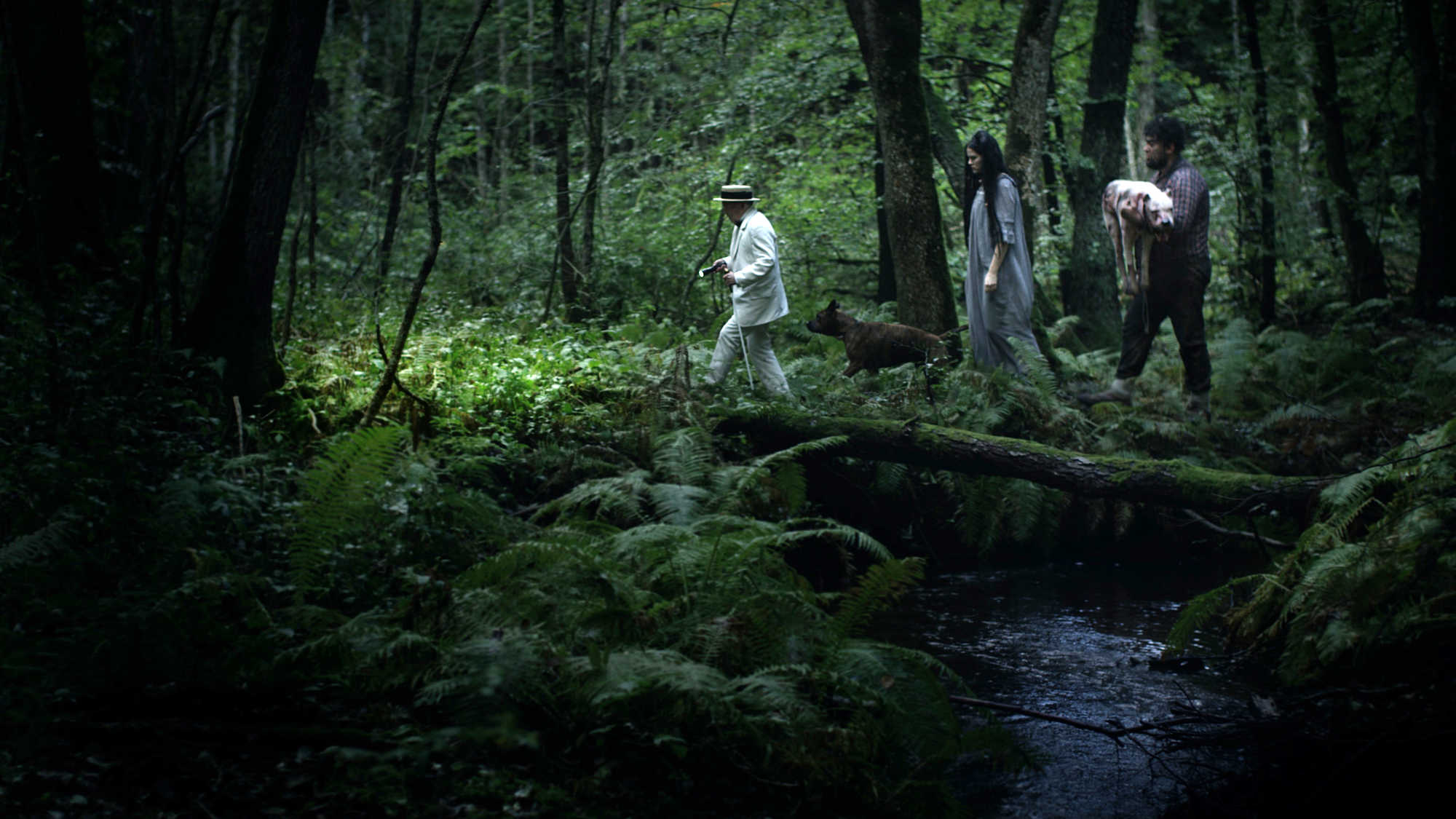
The Swedish / Danish film, Koko-Di Koko-Da, directed by Johannes Nyholm, and which screened yesterday at Brooklyn Horror Fest, is an entry into one of my favorite aspects of horror as of late: the movie which plays not so much with place or characters, but with how time can affect one’s perception of events:
“In the wake of tragedy, married Elin and Tobias head out on the open road for a camping trip. But along the way, a group of homicidal deviants, propelled by the sounds of an ominous children’s song, disrupt their commute again and again—and again and again. Forced to keep reliving the brutality, Eli and Tobias finally have to reckon with the worst moment of their shared lives. A head-spinning and unnerving examination of grief that’s also profoundly sad, Swedish filmmaker Johannes Nyholm’s KOKO-DI KOKO-DA is a ghoulish riff on the GROUNDHOG DAY time loop conceit.”
Obviously, Happy Death Day is the film to really look at, in terms of how time slipping or repeating, and a protagonist’s growing awareness of the situation, but Nyholm isn’t just content to play with how Elin (Ylva Gallon) and Tobias (Leif Edlund) can be messed with over and over again. There’s an emotional aspect to everything which really gives the film its heft.

There are so many reviews which posit that Koko-Di Koko-Da is a meditation on grief, and there’s definitely something to be said for that. The way in which our two main characters are forced to relive an awful day, each time from a different angle, but always with the same outcome definitely sounds like grief. However, maybe it’s a look at how difficult it is for a person to change? Tobias seems to make the wrong decision basically every time he’s given the chance to do so, and one wonders exactly what it’s going to take for him to wise up.
In terms of plot, that’s about it, really. Koko-Di Koko-Da is far less about the story, and so much more about the experience of watching the film. Nyholm does a fantastic job of repeating things so often and so perfectly that it’s only when you take a moment that you really notice how things change subtly in each iteration of the violence in the woods. There are so many moments where you’re like, “Wait what?” that I’m 100% certain that I couldn’t possibly have caught them all.
All of the situational changes and visual surprises are nothing, however, compared to the emotionally destructive scenes of silent shadow puppetry which appear near the beginning and ending of the movie. They tell the story of Elin and Tobias in short form, and if the movie’s startling beginning doesn’t hit you in the feels, the puppeteered animation may still lay you out flat.

There’s also a white cat which keeps appearing that I’m still not quite certain as to what it’s meant to represent. I have my theories, but I’m afraid that trying to puzzle them out might be far more spoilery than I’d like. To be honest, though, I’d be fine if Koko-Di Koko-Da was just following a cat around the Danish woods for 90 minutes, bookended by the shadow puppet cartoons.
Maybe that’s a smidgen hyperbolic, because there does come a moment at the end of the film wherein the story does something which will likely elicit a reaction not unlike mine: “Oh! Now I see … no. Waitaminnit. Damn.” It answers exactly one question while suddenly raising about half a dozen more, and I’ve been thinking about it for the last 24 hours, trying to piece together how it might’ve come to be, or what it meant, and that’s certainly the sign of an effectively-made movie. I’m not confused, but I’m certainly questioning, and eagerly await the chance to see what everyone else thinks of Koko-Di Koko-Da.



